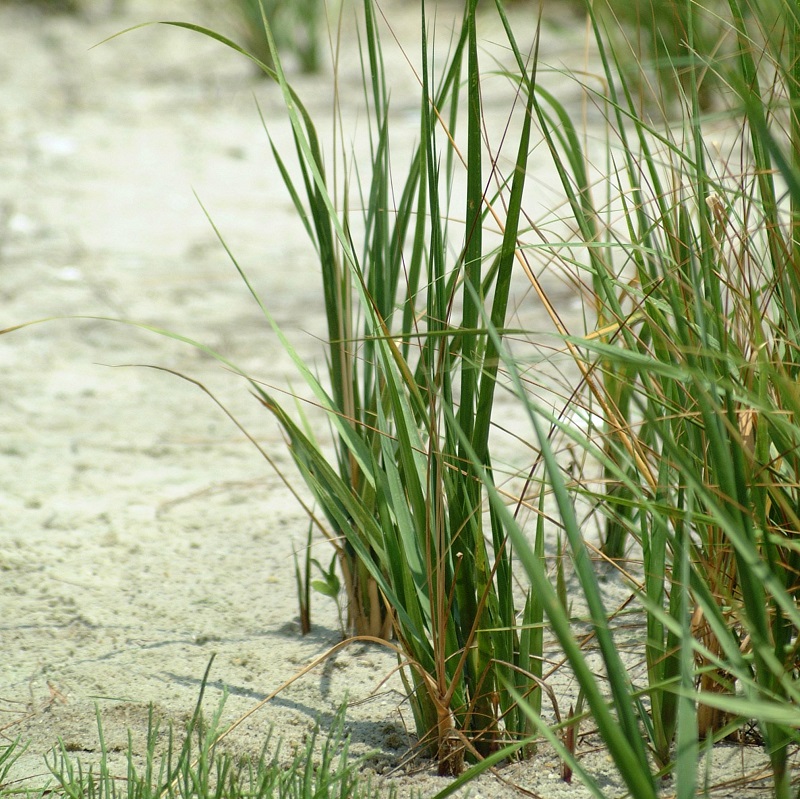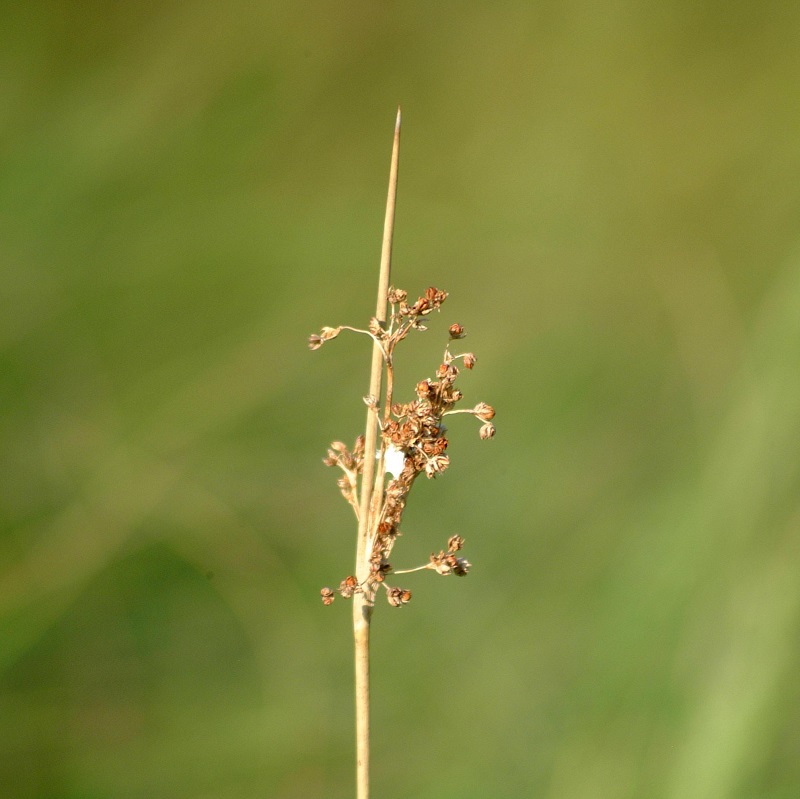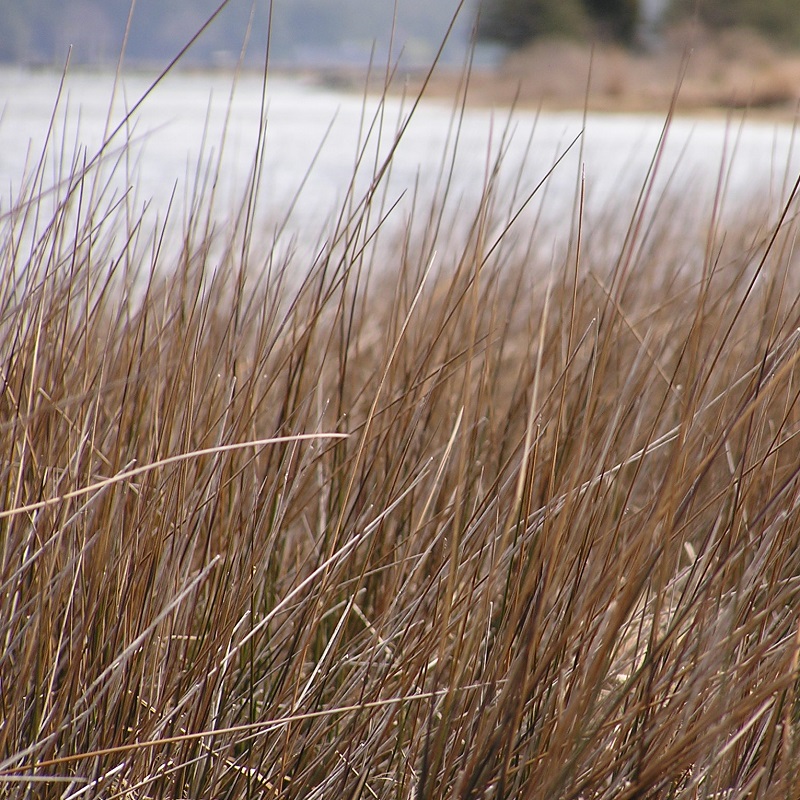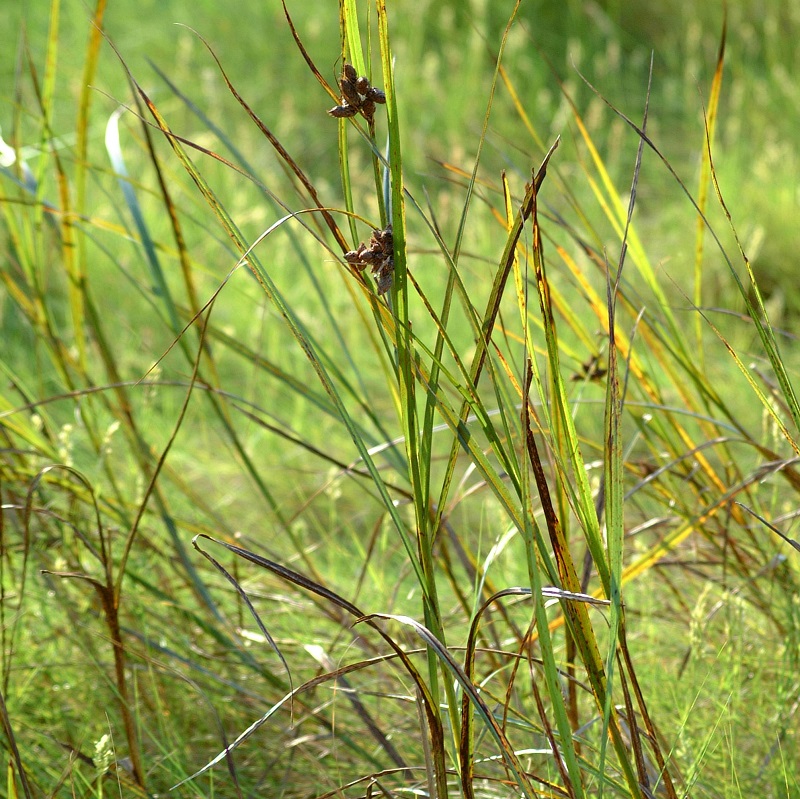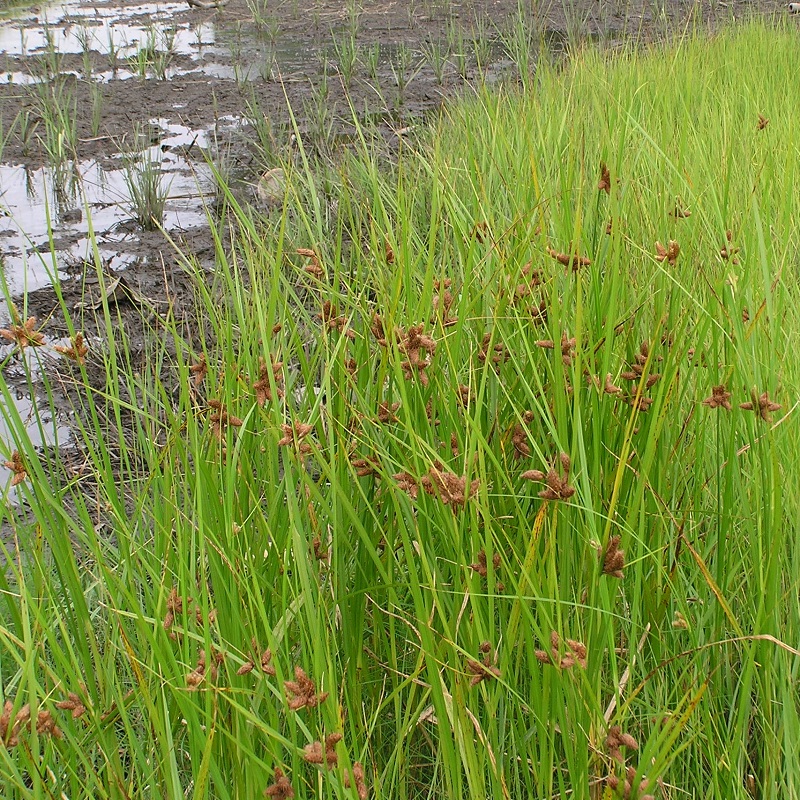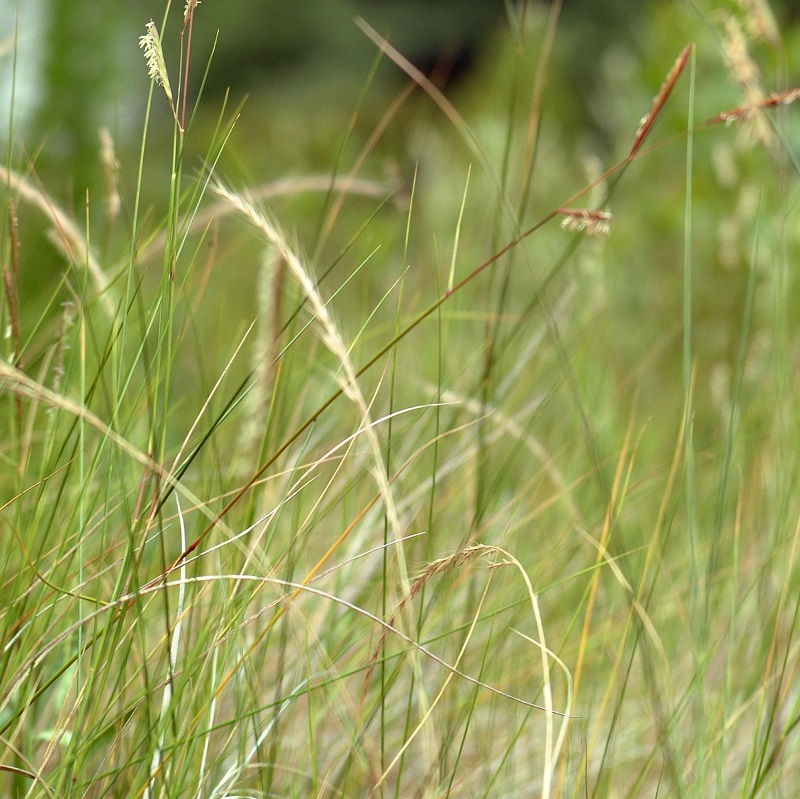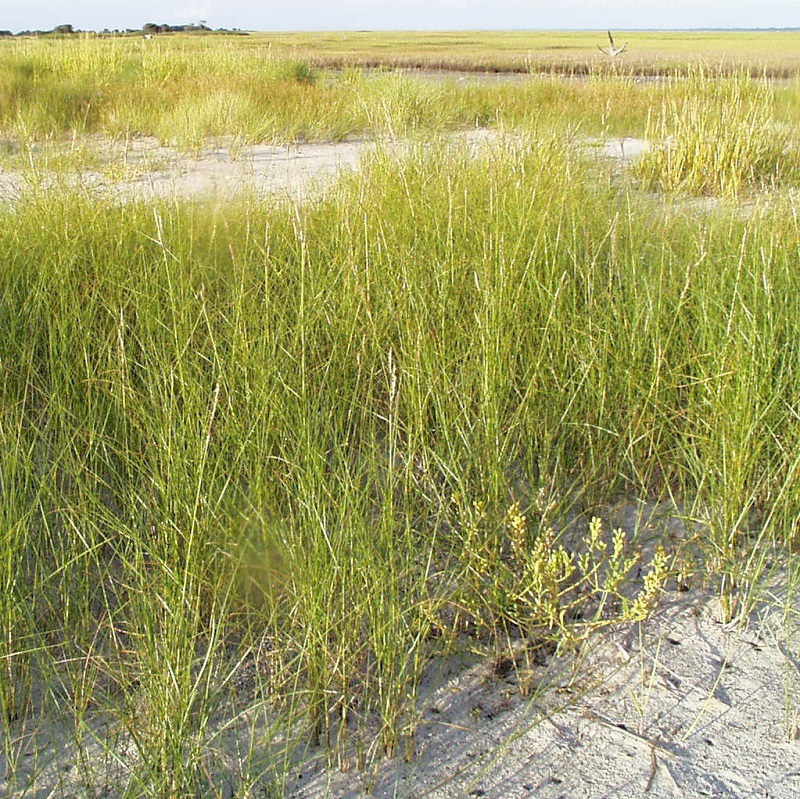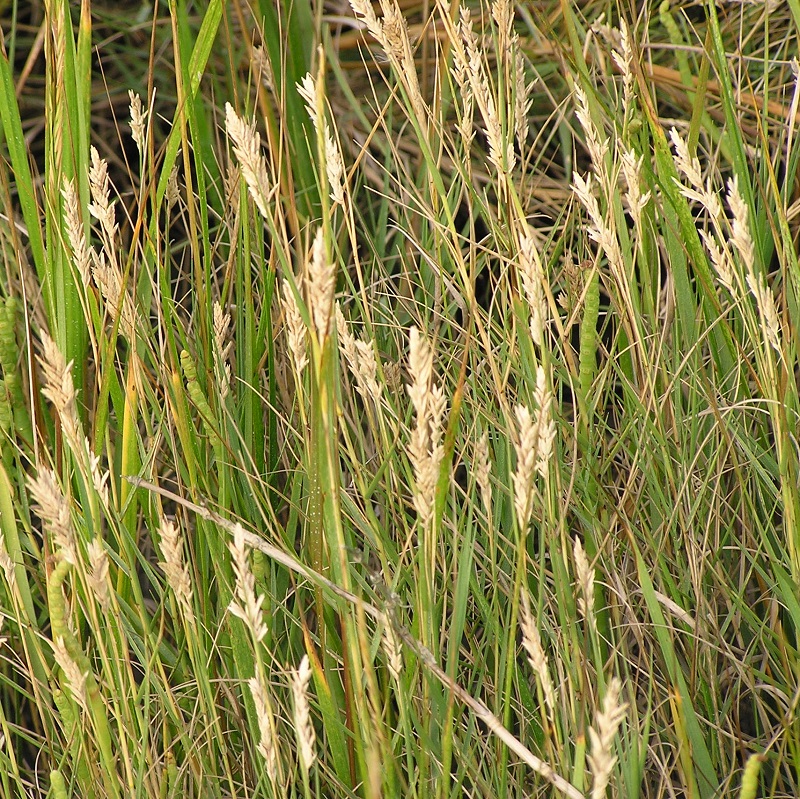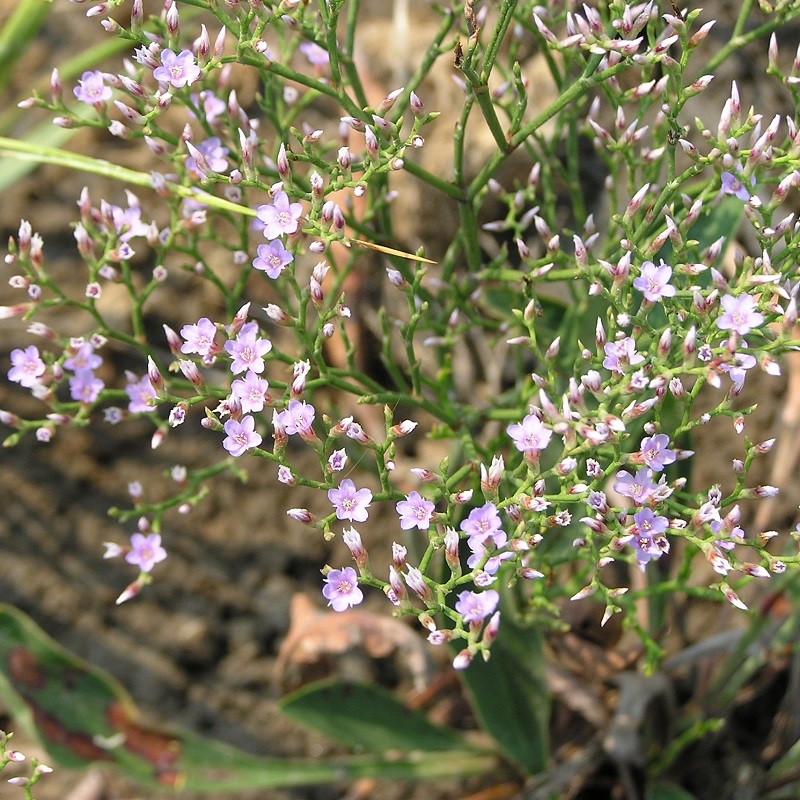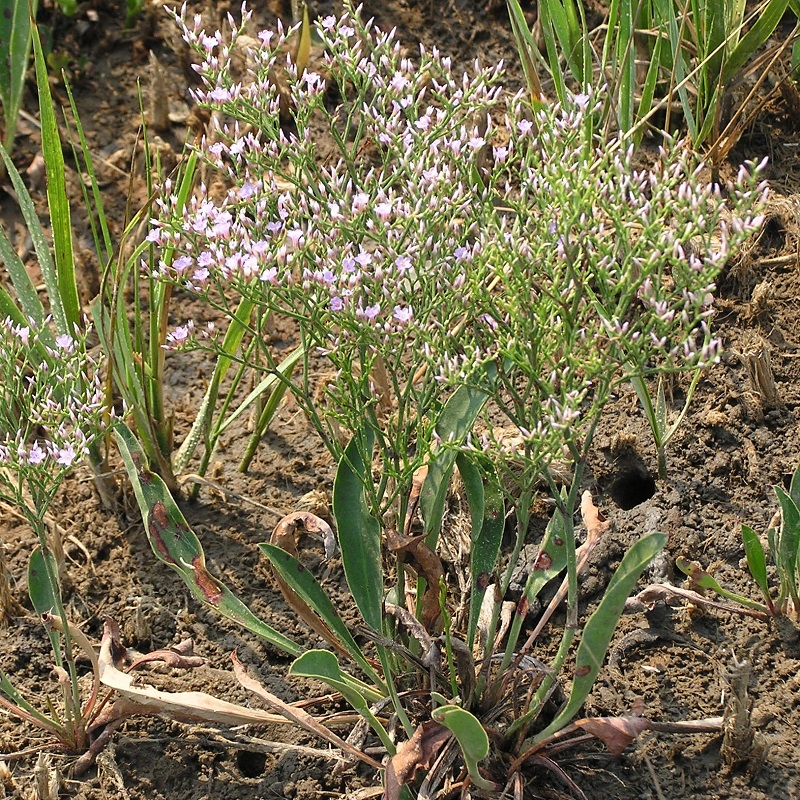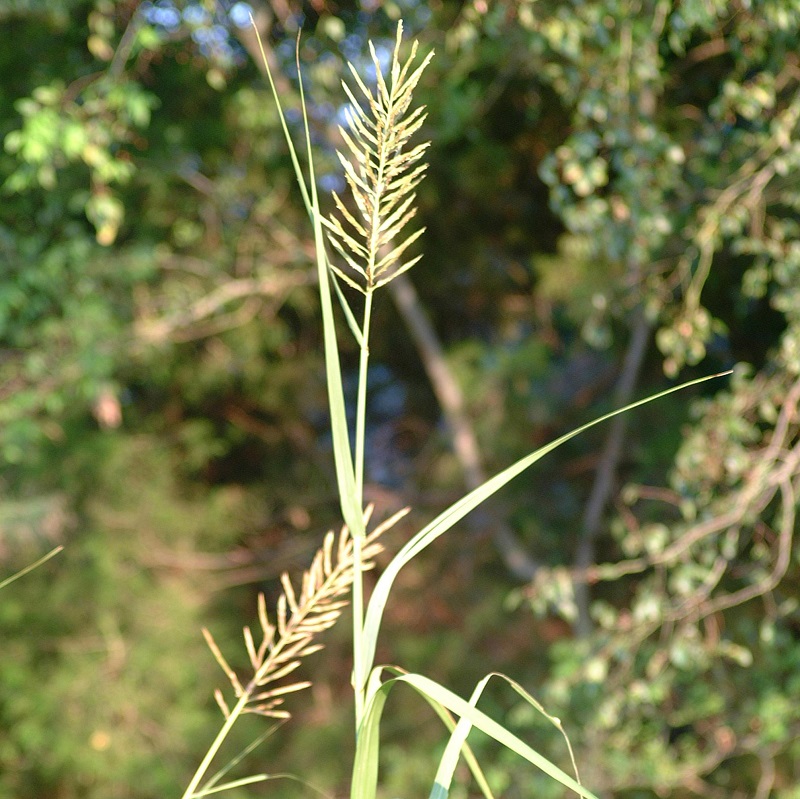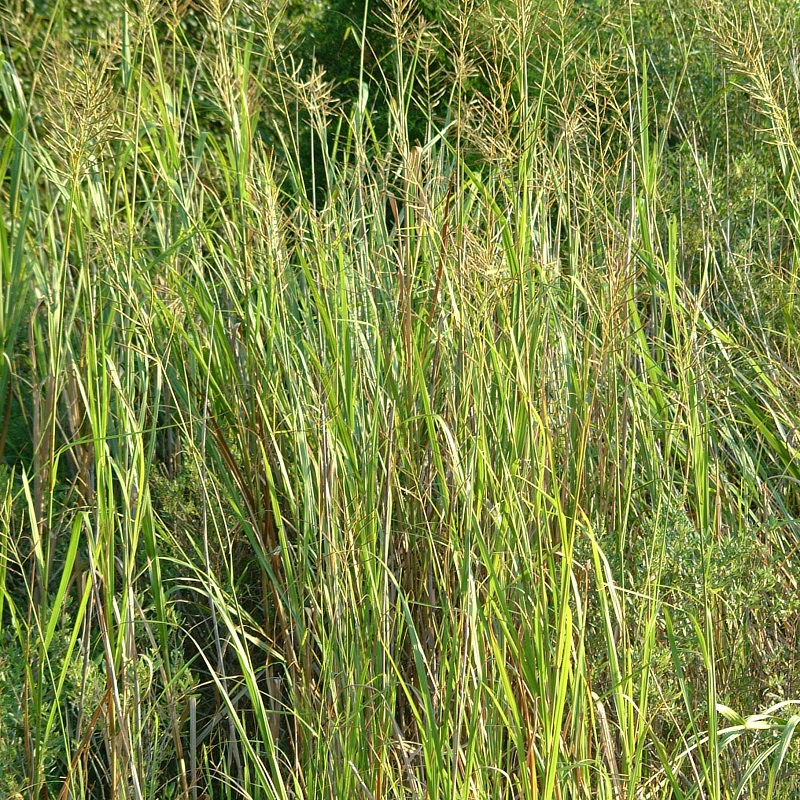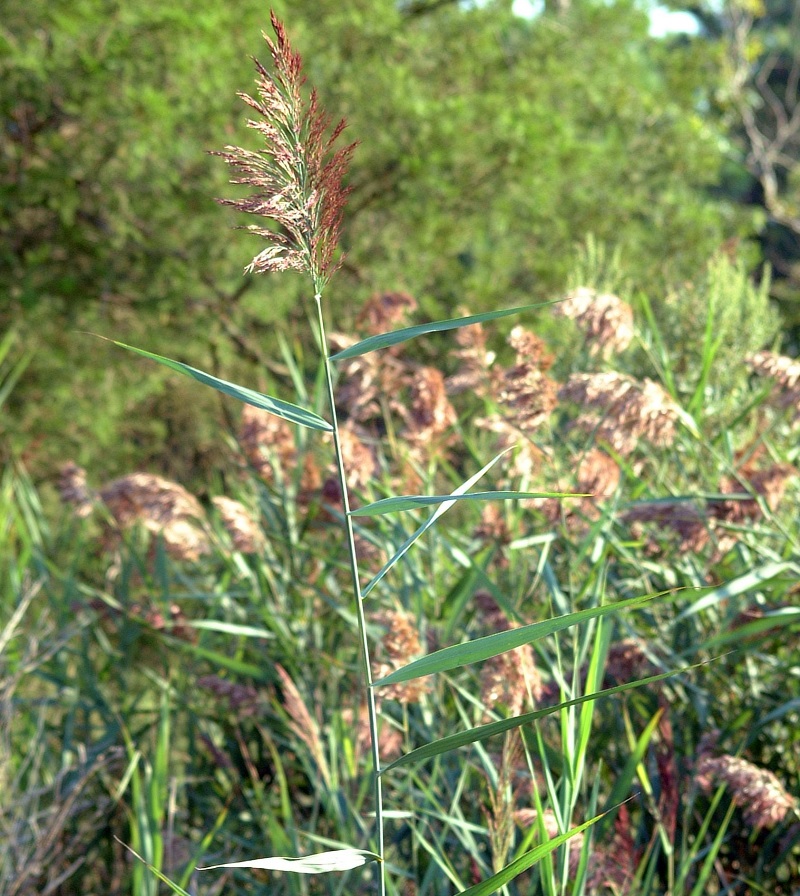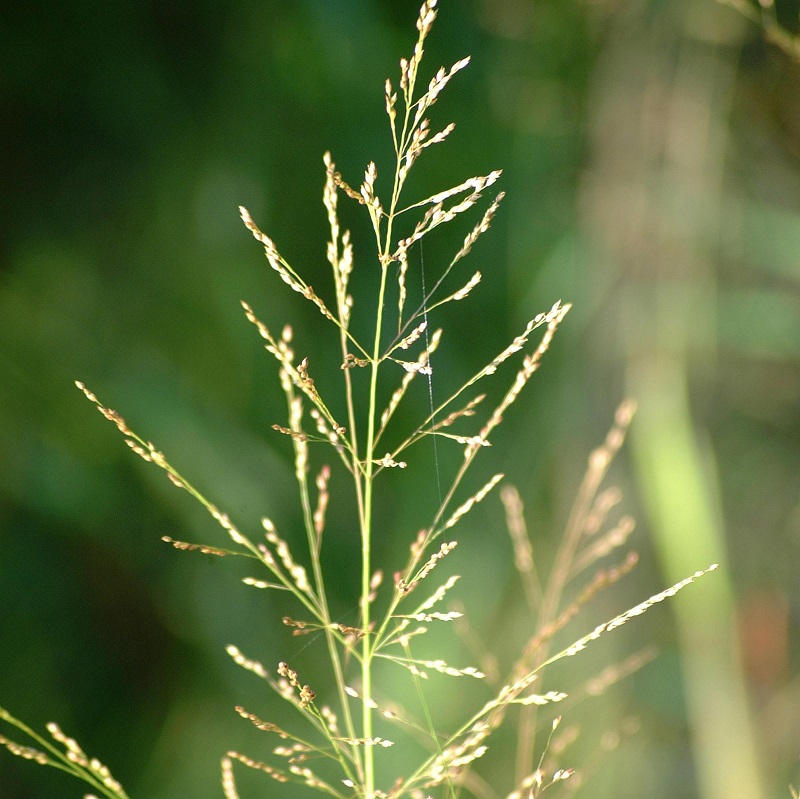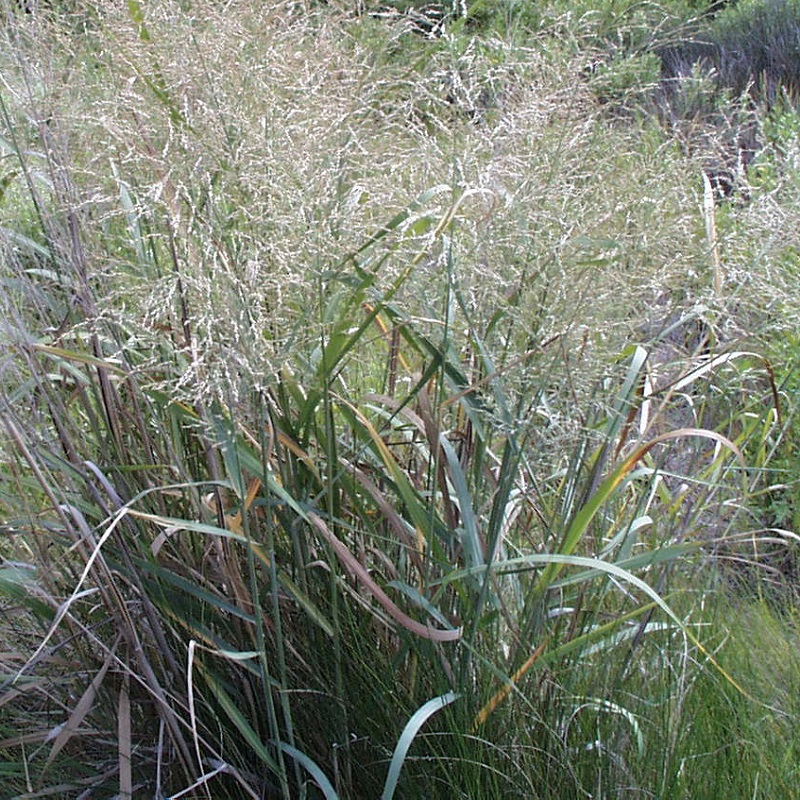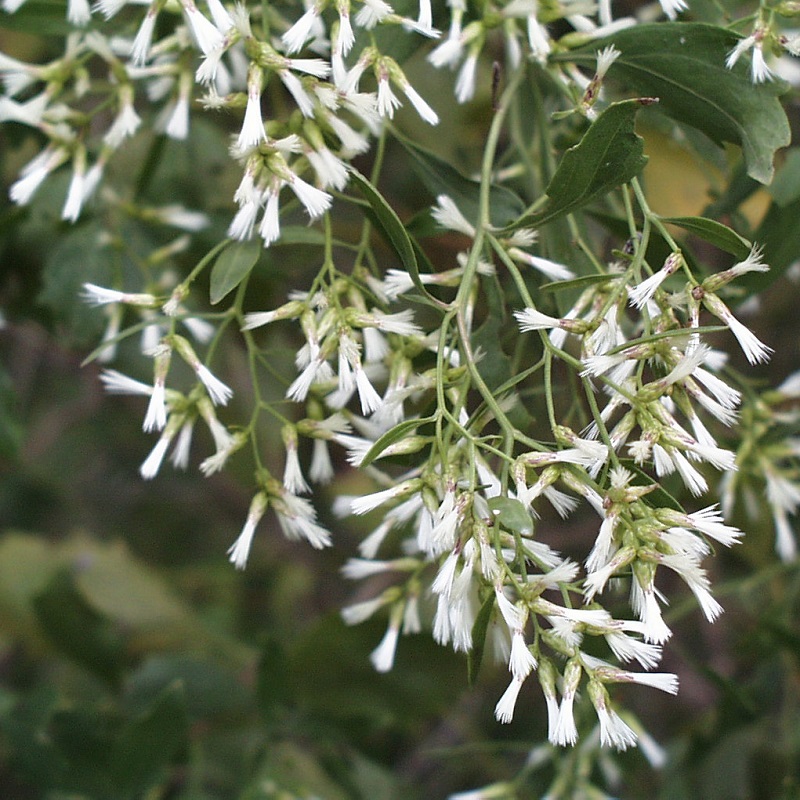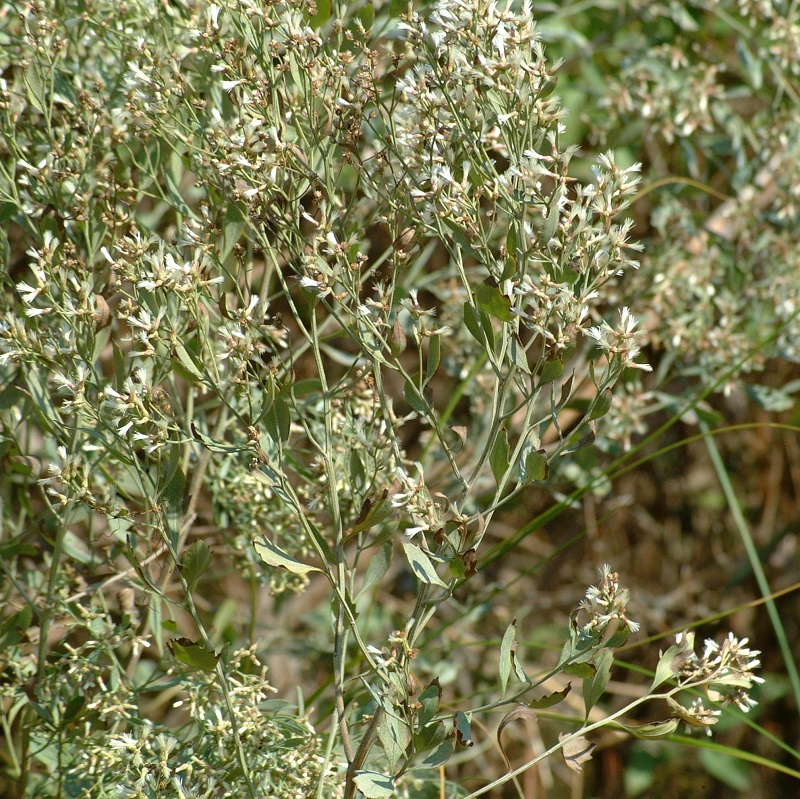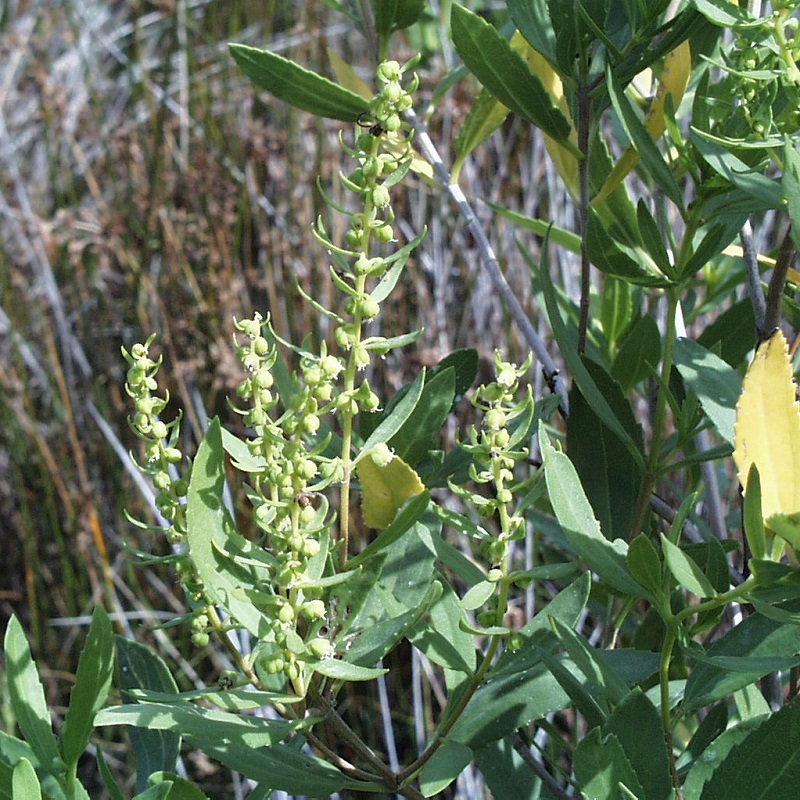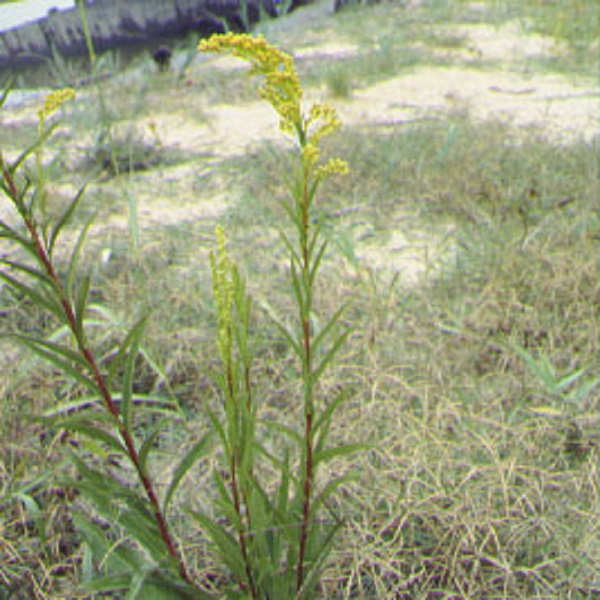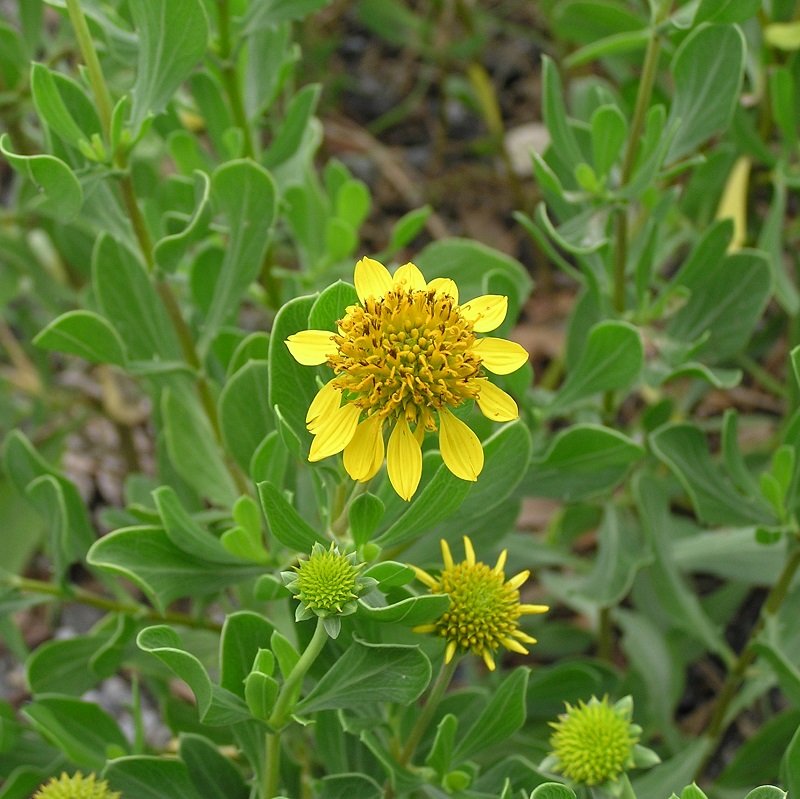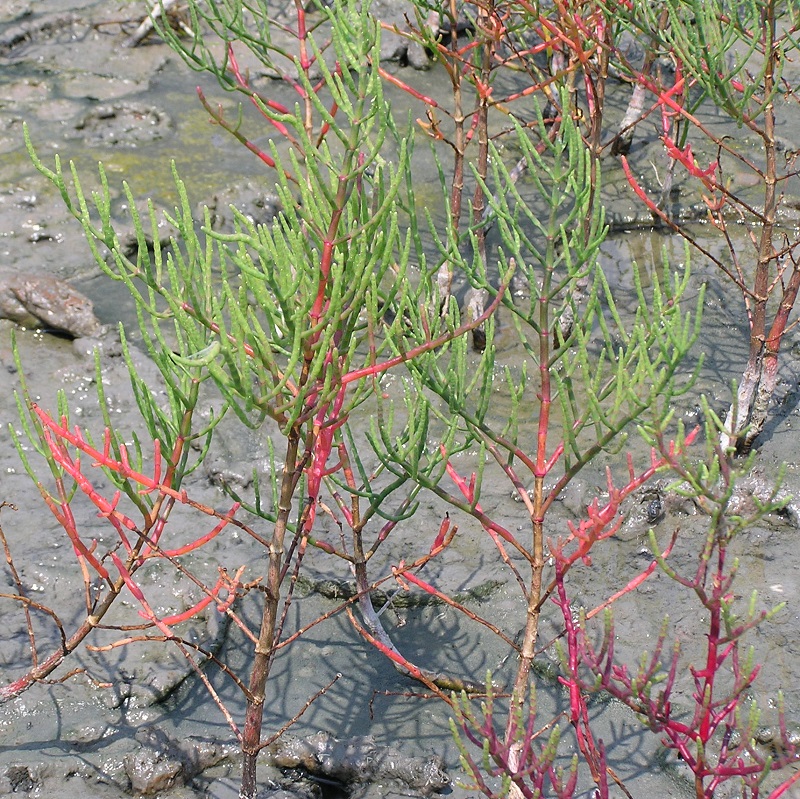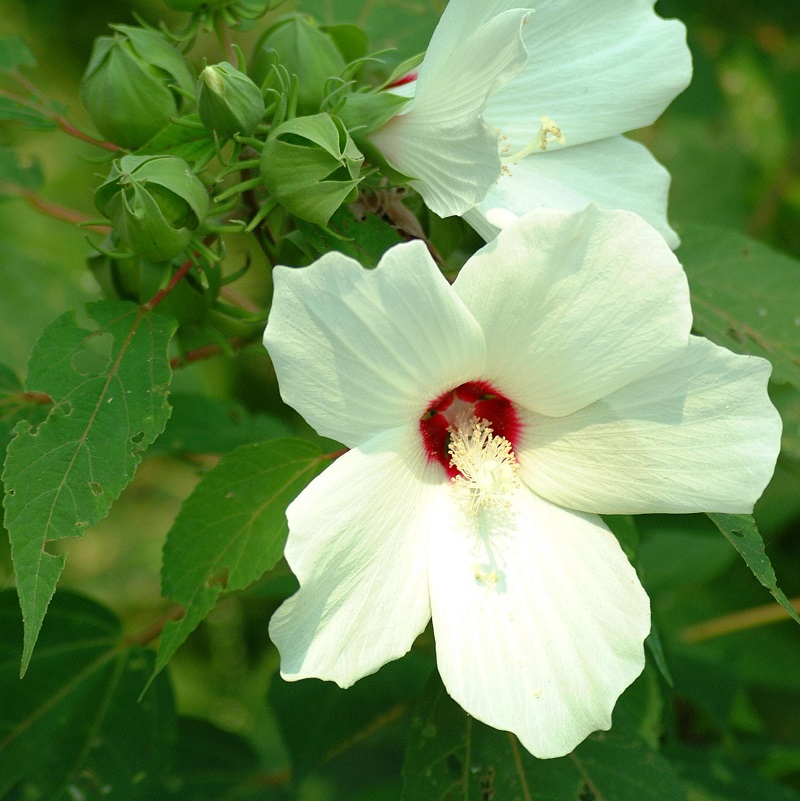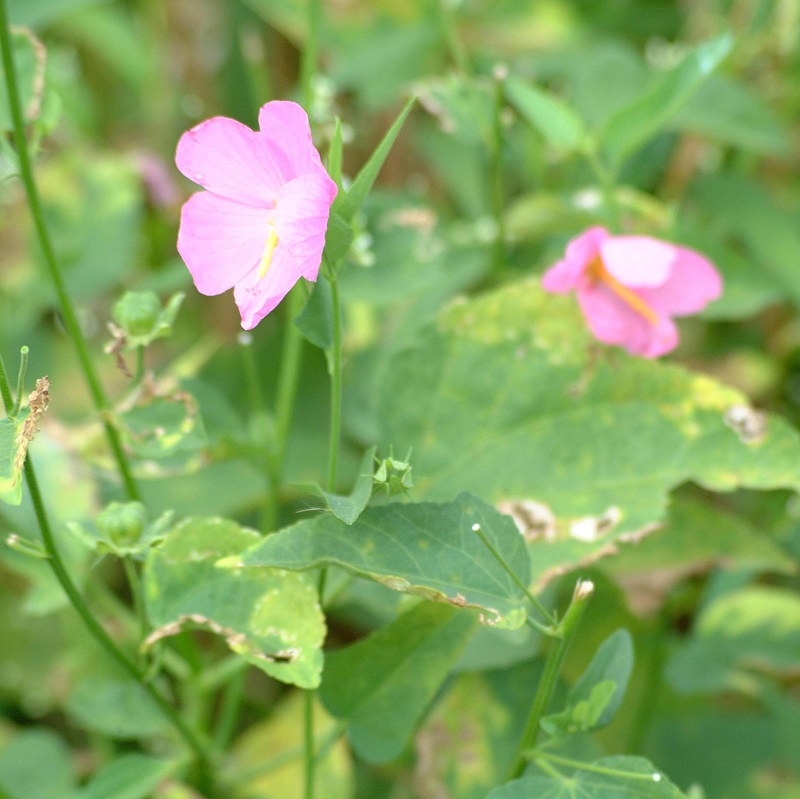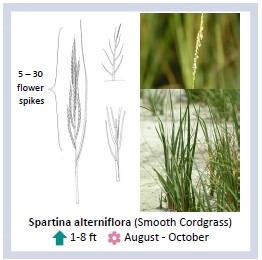Salt & Brackish Marsh
Low Marsh Plants
The low marsh area is flooded daily during high tides. This marsh zone traps sediment and provides important aquatic habitat for small fishes and crabs while it is flooded. During low tides, the low marsh zone is exposed which provides access to food and cover for wetland and terrestrial animals.High Marsh Plants
The high marsh area is only flooded during extreme high tides and storm events. This marsh zone provides valuable storm protection and provides a buffer to intercept and filter stormwater runoff and groundwater flowing from the adjacent upland. There is greater plant diversity in this zone compared to the low marsh due to less flooding.
Saltmeadow hay (Spartina patens)Warm-season grass, height 1-4 ft, spreads by long, slender rhizomes, leaves are rolled and appear wiry, blooms from July to September. |
Salt grass (Distichlis spicata)Has a terminal spike inflorescence and 2-ranked leaves. It grows 8-16 inches and blooms from July to September. |
Sea lavender (Limonium carolinianum)Has basal leaves and lavender flowers that bloom from July to October. Plant grows up to 3 ft. |
Salt marsh aster (Symphyotrichum tenuifolium)Has alternate, flexuous linear leaves and pale purple, blue or white daisy-like flowers that bloom from July to September. Plant grows 1-4 ft. |
Big cordgrass (Spartina cynosuroides)Grows up to 10 ft. and blooms from July to September with 20-50 flower spikes. |
Common reed (Phragmites australis)Has 2 ranked wide, bluish-green leaves with a large inflorescence plume. It grows 6-14 feet and blooms in September to October.
|
Switch grass (Panicum virgatum)Has straw-colored paniculate inflorescence. It grows up to 3 ft. and blooms from July to September. |
Groundsel bush (Baccharis halimifolia)Has alternate fleshy lobed leaves and dense clusters of conspicuous white flowers in fall. Grows up to 8 ft and blooms from September to October.
|
Marsh elder (Iva frutescens)Has opposite fleshy, lance-shaped toothed leaves, with small greenish white flowers that are not prominent. It grows 2-6 ft. and blooms in August to October. |
Seaside goldenrod (Solidago sempervirens)Has dense clusters of yellow flowers and alternate lance-shaped leaves. It grows from 4-5 ft. and blooms from August to October. |
Sea oxeye (Borrichia frutescens)Grows up to 3 ft. with opposite fleshy leaves, yellow daisy-like flowers that bloom from July to September. |
Glasswort (Salicornia spp.)Has succulent round stems with scale-like leaves. Grows 4-20 inches and blooms from July to November. |
Marsh hibiscus (Hibiscus moscheutos)Has large showy white hibiscus flowers and alternate leaves. Grows up to 12 ft. and blooms July to September. |
Marsh mallow (Kosteletzkya virginica)Has showy pink hibiscus-like flowers with alternate leaves that have dense hairs. It grows 2-3 feet and blooms from July to August. |
Field Guide to Virginia Salt and Brackish Marsh Plants
This basic field guide illustrates the most common plants in Virginia’s tidal salt marshes. The plants are color-coded by tidal inundation zone with illustrations to highlight recognizable features.


